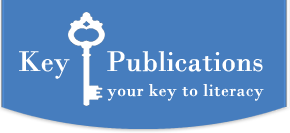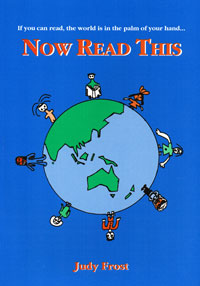Even with technology, your child still needs to be able to read and write...
Now Read This contains information about the following and more:
How we learn to read
All of us have a preferred way of learning. Some of us are good listeners and easily remember what we have heard. Others learn by seeing and remembering and some of us learn by doing. We may have a combination of these learning styles. When it comes to reading, all of us learn in our own particular way. For some of us it takes a short time, but for the majority of learners it takes a number of years to be able to piece together, in our own minds, all of the elements of reading: the sounds the letters make, breaking words down into their sounds and blending the sounds back together to make words (decoding the words), reading the words in context and understanding what they mean (COMPREHENSION), remembering the words every time we see them. In the end we become successful readers.
How reading is taught nowadays
There are many schools of thought about how reading should be taught and there are many “experts” who believe their way is the right way. Many programs teach the method but forget about the learners who are trying to fit the way they are being taught into their pattern of learning. For example, remembering lists of words may be easy for some learners but impossible for others. Being exposed to reading and books from an early age may be enough to produce good reading in some learners but it is not enough for others who actually need to be taught how to read.
TAPPS is a way of listening to someone else read and of helping him/her to become successful at it. It incorporates and is compatible with all methods of teaching reading. It considers learners. It gives them the time and the information they need to be able to solve their own problems with reading as they occur in each text they read; until they become fluent and functional readers, that is, being able to read and understand any text regardless of how it’s presented: in book or letter form, or on a screen. TAPPS has been successful with children with ADD, ADHD, Dyslexia, Asperger’s Disorder and even with some Autistic children. It works and is simple to use. Read more…
What others have to say about Now Read This
“Although Now Read This deals primarily with teaching children to read, it also alerts parents and caregivers to the really basic issues; e.g. the need for adults to believe in children, the importance of play in children’s lives, and the need to allow children to take responsibility for their own failings and for their own successes. The book is easy to read, free of jargon, and full of interesting and delightful anecdotes.” Signpost, Lady Gowrie Child Care Centre Inc.
“I am a teacher and a parent. I have studied how to teach reading and, in particular, how to help children who encounter reading difficulties. I have a nine-year-old son whom I have recently decided to educate at home. He has extreme difficulties and learning to read has eluded him thus far. Your book, Now Read This, has given me hope that I can help James to read. He is just like Jane whom you describe in the book. I think the book is very good and your TAPPS technique is brilliant. It makes so much sense to me. If schools used it there would be no need for kids to recover from reading failure. They wouldn’t fail in the first place.” Robyn, Cecil Plains
“Thank you for your book, Now Read This. I don’t know where my daughter would be with her reading if it wasn’t for this book. I can see an amazing improvement and my daughter’s confidence has returned. I truly believe in TAPPS. At Christmas my daughter delighted us by reading the sub-titles of a Russian movie on SBS to the amazement of a relative. Thank you ever so much.” Deidre, Parent
OPEN LEARNING INFORMATION REVIEW
Now read this
Frost, Judy
This slim user-friendly book about children’s reading and their learning processes in general is written in lay language. It is addressed to parents as the primary teachers of their children. Teachers also could find its contents of practical value. It has a sound underlying philosophy of developing independence in children as learners and confidence in parents as teachers. The author’s own simple but effective technique entitled TAPPS is fully explained. It works over three stages. Sample reading and record sheets are provided. The technique is founded on the three R’s – Rules, Risk-taking and Responsibility which Frost sees as the ‘missing links between dependent, unproductive, anxiety-laden children and happy and relaxed independent learners’. Points made in the text are illustrated with brief anecdotes drawn from the author’s intensive experience as a primary school teacher and then as a ‘remedial/learning disability/learning support teacher’. The tone of the text is warm and supportive in general though the slightly lecturing manner of the opening sentences in the introduction could be off-putting to some readers. Nevertheless the book makes a worthwhile contribution to helping children and parents achieve happy and successful learning outcomes.
Reviewed by: Open Access Unit, Education Queensland
Rating: xxx OZ (Highly recommended)
National Curriculum Area: English
Descriptors: Nonfiction; Reading; Teacher reference
© of this review; State of Queensland (Department of Education)

